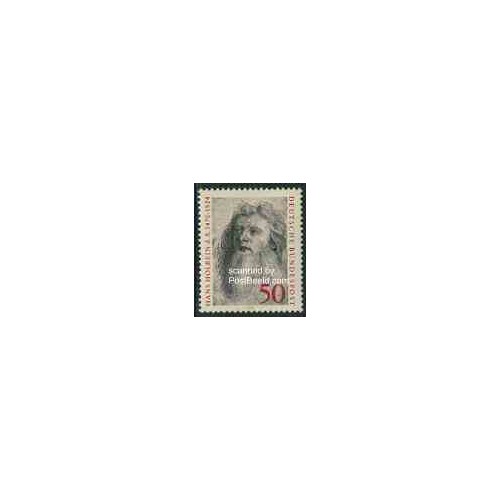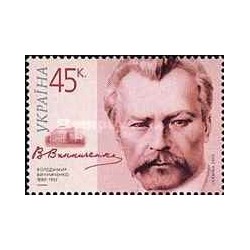- جدید



Germany, Federal Republic 1974 - Hans Holbein 1v
توجه : درج کد پستی و شماره تلفن همراه و ثابت جهت ارسال مرسوله الزامیست .
توجه:حداقل ارزش بسته سفارش شده بدون هزینه پستی می بایست 100000 ریال باشد .
Hans Holbein (c. 1460–1524) was a German painter.[1]
| Hans Holbein the Elder | |
|---|---|
 |
|
| Born | c. 1460 Augsburg, Free imperial city, Holy Roman Empire |
| Died | 1524 Issenheim, Alsace, Holy Roman Empire |
| Movement | Late Gothic |
Hans Holbein the Elder (ca. 1465-1524) was born in free imperial city of Augsburg (Germany), and died in Isenheim, Alsace (now France). He belonged to a celebrated family of painters; his father was Michael Holbein; his brother was Sigismund Holbein (d. 1540). He had two sons: Ambrosius Holbein (b. ca. 1494, d. ca. 1519) and Hans Holbein the Younger, a famous painter (b. ca. 1497, d. 1543). They had their first painting lessons from their father.
The date of the Hans Holbein the Elder's birth is unknown. His name appears in the Augsburg tax books in 1494, superseding that of his father. As early as 1493, Holbein had a following, and he worked that year at the abbey at Weingarten, creating the wings of an altarpiece representing Joachim's Offering, the Nativity of the Virgin Mary's Presentation in the Temple, and the Presentation of Christ. Today they hang in separate panels in the cathedral of Augsburg.
Hans Holbein the Elder painted richly colored religious works. His later paintings show how he pioneered and led the transformation of German art from the (Late) International Gothic to the Renaissance style. In addition to the altar paintings that are his principal works, he was a woodcut artist, an illustrator of books, and a church window designer; he also made a number of portrait drawings that foreshadow the work of his famous son, Hans Holbein the Younger.
Hans Holbein the Elder first appears at Augsburg, partnered with his brother Sigismund (who died in 1540 at Bern, Switzerland). Augsburg, at the time of Maximilian I, Holy Roman Emperor, cultivated art with a Flemish style, and felt the influence of the schools of Bruges and Brussels, even though it was near Italy, with close commercial connections to Venice. Sigismund is a painter also, but Hans had the lead of the partnership, and signed all the works they produced.
After 1516 Hans was declared a tax defaulter in Augsburg, and he gladly accepted commissions abroad. At Issenheim in Alsace, where Matthias Grünewald was employed at the time, Holbein also found patrons, and was contracted to complete an altarpiece. His brother Sigismund and others sued him in Augsburg for unpaid debts. Pursued by Augsburg authorities, he fled Issenheim, abandoning his work and equipment, and went to Basel. He died two years later at an unknown location; and after 1524 his name no longer appeared on the register of the Augsburg guild.
تشکر نظر شما نمی تواند ارسال شود
گزارش کردن نظر
گزارش ارسال شد
گزارش شما نمی تواند ارسال شود
بررسی خود را بنویسید
نظر ارسال شد
نظر شما نمی تواند ارسال شود

Germany, Federal Republic 1974 - Hans Holbein 1v
check_circle
check_circle















